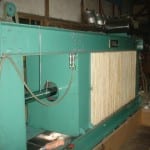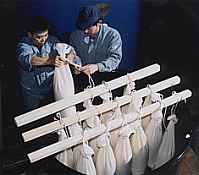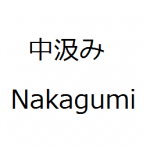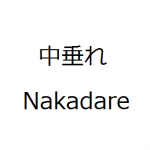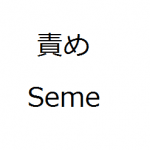In any industry there are big players and little players. There are always huge companies that produce  widgets – or sake – in volume, with stable quality and cost-efficiency. And there are also companies that produce much less and do everything on a smaller scale. This juxtaposition exists in the worlds of widgets, beer, wine and of course sake.
widgets – or sake – in volume, with stable quality and cost-efficiency. And there are also companies that produce much less and do everything on a smaller scale. This juxtaposition exists in the worlds of widgets, beer, wine and of course sake.
It is important to acknowledge that both scales of operation are good. They are all good companies, the big and the small. Or at least, if they are not good companies, it is not a function of their size. So it is important not to lean one way or the other, not to prejudice against either the big or the small, and to appreciate what both big and tiny sake companies contribute to the overall picture.
There is much to say about this situation, and I go out of my way to support brewers of all scales of operation. But let us save that long and interesting conversation for yet another day.
What is quite interesting to grasp, though, is just how big is big, and just how small is small? And how do the twain compare? The figures can be eye-opening.
 To begin with, the sake industry is very polarized. There are just about 1200 kura (breweries) actively making sake these days. Or at least, 1200 that say they are making it. The truth might be more like 1000, but I digress. Let this be a part of the conversation we have set for yet another day.
To begin with, the sake industry is very polarized. There are just about 1200 kura (breweries) actively making sake these days. Or at least, 1200 that say they are making it. The truth might be more like 1000, but I digress. Let this be a part of the conversation we have set for yet another day.
Of those 1200, about only 15 combine to account for over half the sake made on the planet. Fifteen. Make. Half. And at the other end of the polarized spectrum, we have about 1000 breweries that combine – all one thousand of them – combine to comprise 25 percent of the market. Numerically expressed 0.8 percent of the kura pay 52 percent of the sake taxes. Conversely, 94% of the industry combines for 25 percent of the sake taxes. Dotted across the chasm between these two there are 200 or so kura of medium and stable size.
Look at those number again. Think about them. It’s a huge spread.
What is interesting is that the large companies have their own challenges and responsibilities as an  enterprise, and problems-opportunities that only large companies can have. And the smaller companies, which often make barely enough to be sustainable and barely profitable, have their own sets of trials and tribulations to face – as well as challenges and opportunities. Neither one is inherently better than the other.
enterprise, and problems-opportunities that only large companies can have. And the smaller companies, which often make barely enough to be sustainable and barely profitable, have their own sets of trials and tribulations to face – as well as challenges and opportunities. Neither one is inherently better than the other.
The difference in the size of the big and the small is astounding. For example, if one tours Hakutsuru in Nada, the biggest company in the industry, there is a raised hallway from which we can look down on four identical pressing machines that are more or less continuously cranking out just-completed sake.
There is a sign on the wall that runs through some rudimentary math, and tells us that if we were to drink two full glasses of sake a day, every day (hey, no problem here!) it would still take 220 years to finish what was pressed in the room below in a single day. And bear in mind this is but one of their several facilities (albeit the largest for sure).
Hovering clustered near the other end of the scale are about a thousand breweries that make in an entire brewing season about half of what the above-mentioned place makes in a single day. It’s whacked to say the least.
 During the Japan-based winter running of the Sake Professional Course each year, I take the group of attendees to four kura. One is impossibly tiny, the brewers of Soku in Kyoto. They have five tanks, each of which will yield about 2000 bottles of sake at a pop. He will rotate through them and end up using each two to three times. He employs like five people, including his wife and his mom.
During the Japan-based winter running of the Sake Professional Course each year, I take the group of attendees to four kura. One is impossibly tiny, the brewers of Soku in Kyoto. They have five tanks, each of which will yield about 2000 bottles of sake at a pop. He will rotate through them and end up using each two to three times. He employs like five people, including his wife and his mom.
The next day we visit the largest brewer in the industry, the aforementioned Hakutsuru. In one of the two brewing buildings we visit, there are about sixty tanks, each of which can yield about 20,000 bottles – ten times the other place. They make four a day of these, and press four a day. That alone is 40 times the production of the other – from but one of their kura. And it’s delicious honjozo as well!
Each has different means, ends, and philosophies as well as different resources, infrastructures and goals. And I emphasize again: they are both great companies, and both companies make some great sake.
Many of us love to love the smaller kura because of their romantic appeal, and surely it is there. I’ll not  deny that. We all love a good story, wherein a small kura has the flexibility to try new rice or yeast types, to make sake of which there is little and it’s hard to get, where little old ladies put on the labels by hand and where they can’t even spell the word machine, much less use any. Sure; that’s fun.
deny that. We all love a good story, wherein a small kura has the flexibility to try new rice or yeast types, to make sake of which there is little and it’s hard to get, where little old ladies put on the labels by hand and where they can’t even spell the word machine, much less use any. Sure; that’s fun.
But there are just as many interesting, impressive and satisfying stories about the large brewers, and their sake can be great and always well priced. Bear in mind, companies like that can make exactly what they want, and with great consistency. And their contributions to the industry over the years have been indispensable to its progress.
So in the end, don’t let size be a factor. But at least be impressed with the difference in scales of operation in this highly skewed and polarized traditional industry






